Our history in frames
#50YearsMibauStema
Throughout our 50th anniversary year, we’ll be sharing key moments from our history that shaped the company we are today – a journey that reminds us of the strong foundations on which our company is built:
𝐑𝐨𝐨𝐭𝐞𝐝 𝐢𝐧 𝐞𝐱𝐩𝐞𝐫𝐢𝐞𝐧𝐜𝐞, 𝐝𝐫𝐢𝐯𝐞𝐧 𝐛𝐲 𝐭𝐡𝐞 𝐟𝐮𝐭𝐮𝐫𝐞!
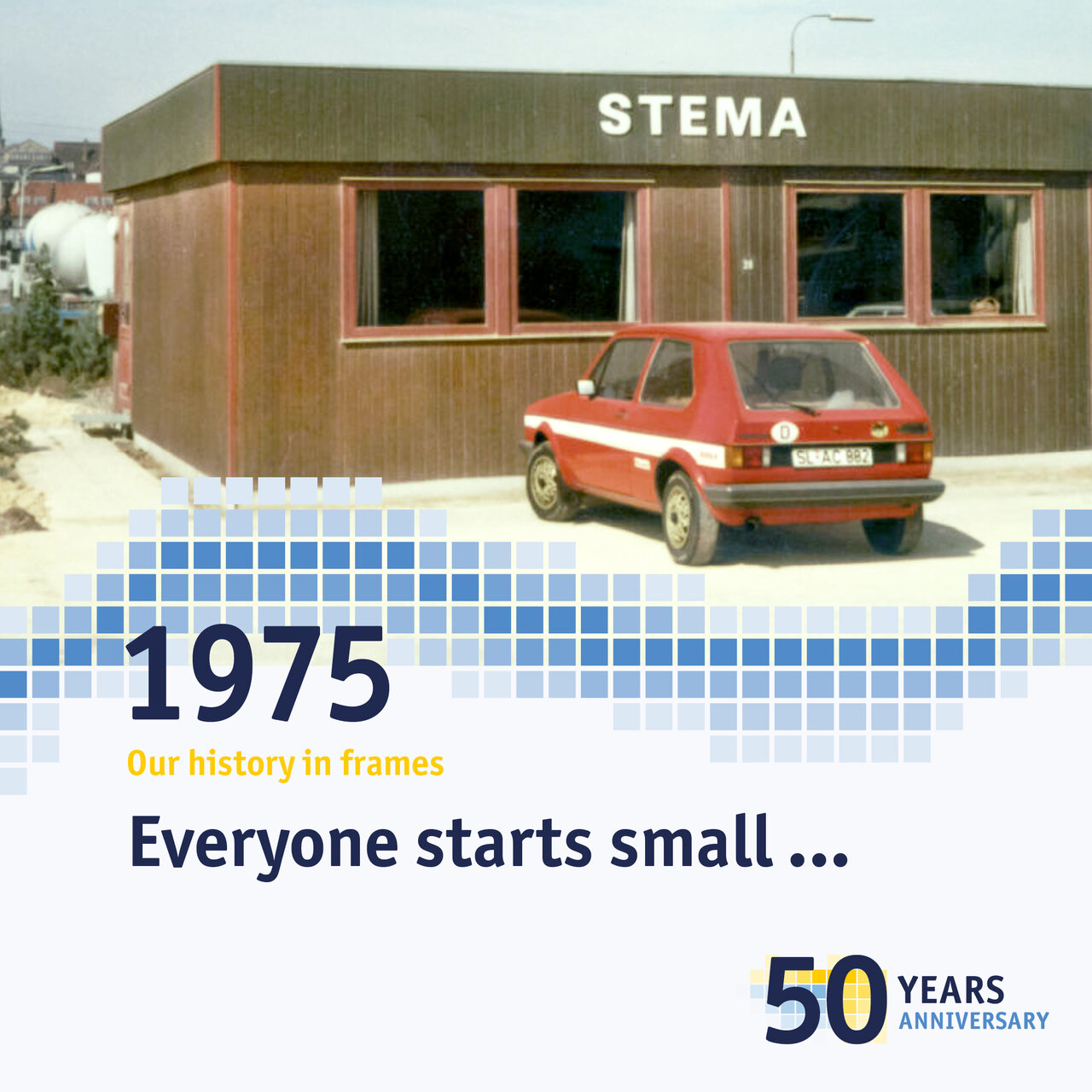
1975
𝐂𝐚𝐧 𝐲𝐨𝐮 𝐛𝐞𝐥𝐢𝐞𝐯𝐞 𝐭𝐡𝐚𝐭 𝐭𝐡𝐢𝐬 𝐬𝐦𝐚𝐥𝐥 𝐚𝐧𝐝 𝐫𝐚𝐭𝐡𝐞𝐫 𝐦𝐨𝐝𝐞𝐬𝐭 𝐨𝐟𝐟𝐢𝐜𝐞 𝐦𝐚𝐫𝐤𝐞𝐝 𝐭𝐡𝐞 𝐛𝐞𝐠𝐢𝐧𝐧𝐢𝐧𝐠 𝐨𝐟 𝐒𝐭𝐞𝐦𝐚 – 𝐨𝐧𝐞 𝐨𝐟 𝐨𝐮𝐫 𝐭𝐰𝐨 𝐟𝐨𝐮𝐧𝐝𝐢𝐧𝐠 𝐜𝐨𝐦𝐩𝐚𝐧𝐢𝐞𝐬?
Back in 1975, with just two employees, Stenmaterialer & Shipping Aabenraa ApS started trading raw materials for the concrete and asphalt industry.
Stema provided services such as sales, supply, chartering, stevedoring, and shipping. The company sold and traded limestone and aggregates from Denmark, Sweden, UK and Norway, while selling in Danmark and exporting primarily to Germany. Even our picture highlights the strong ties with Stemas southern neighbour: the German car belonged to an employee who crossed the border daily!
1978
𝐍𝐨𝐰 𝐭𝐡𝐚𝐭’𝐬 𝐬𝐭𝐚𝐫𝐭-𝐮𝐩 𝐬𝐩𝐢𝐫𝐢𝐭!
Founded in 1978 by Hans-Jürgen Hartmann the German Elbe-Weser-Handelskontor – one of our two founding companies – operated out of the owner family's private home for five years. But in 1983, it was time for a change: the company built its first headquarters in Cadenberge. Later, EWH rebranded as Mibau – and to this day, the headquarters of Mibau Stema Group remain at the same location.
𝐅𝐮𝐧 𝐟𝐚𝐜𝐭: In its early years, the initials EWH playfully stood for "𝒆𝘪𝘯 𝒘𝘪𝘭𝘥𝘦𝘳 𝑯𝘢𝘶𝘧𝘦𝘯" – German for "𝘢 𝘸𝘪𝘭𝘥 𝘣𝘶𝘯𝘤𝘩". And with good reason! Back then, the company traded in… well, almost everything: Danish wooden houses, garden furniture, windows, doors – and even the wheel loaders you see in the picture.
Another key pillar of the business was the import of Faxe lime, a porous limestone from quarries near the Danish town of Faxe. This lime was amongst spread over forests by helicopter to combat forest dieback – 𝐌𝐢𝐛𝐚𝐮 𝐒𝐭𝐞𝐦𝐚’𝐬 𝐯𝐞𝐫𝐲 𝐟𝐢𝐫𝐬𝐭 𝐬𝐲𝐬𝐭𝐞𝐦 𝐬𝐨𝐥𝐮𝐭𝐢𝐨𝐧!
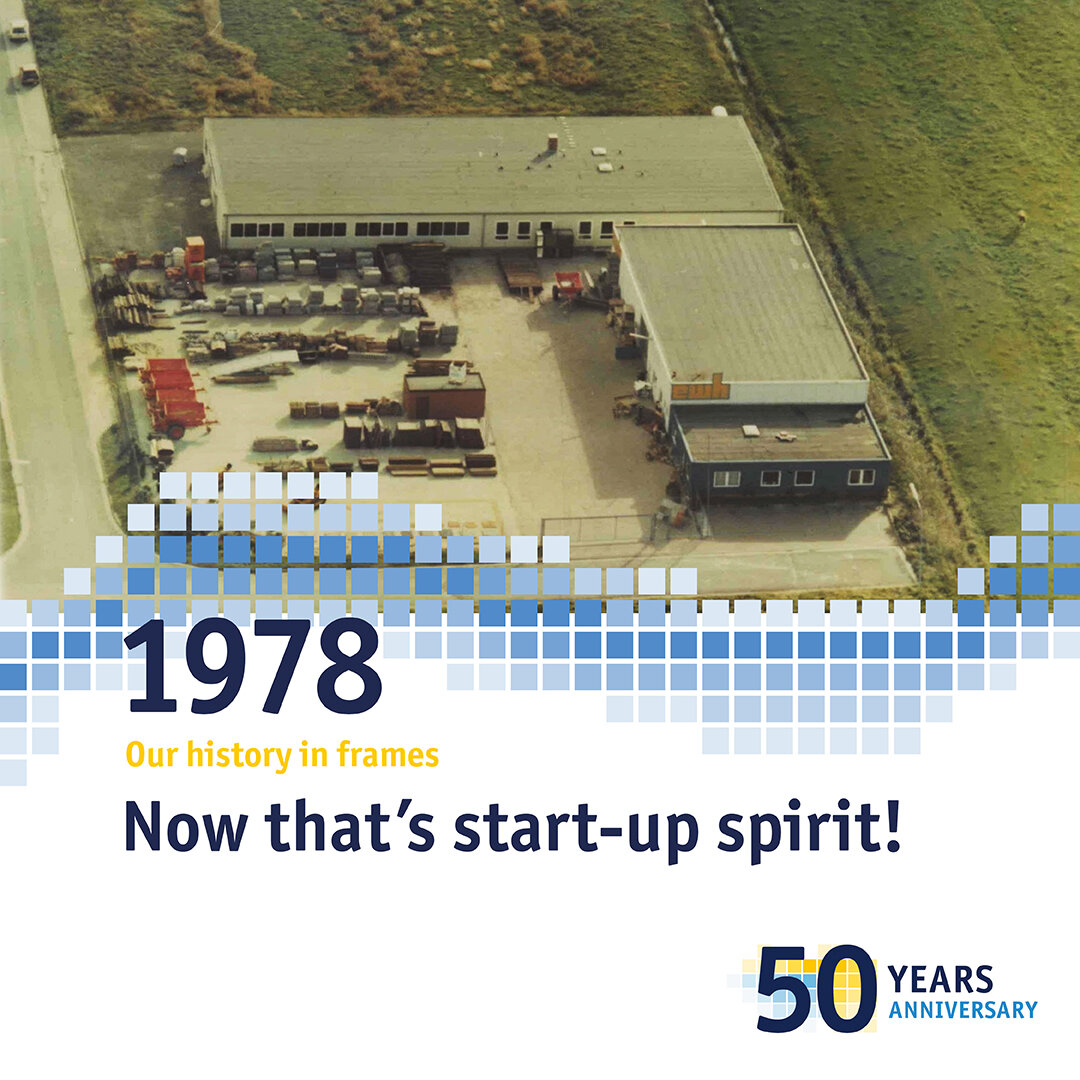
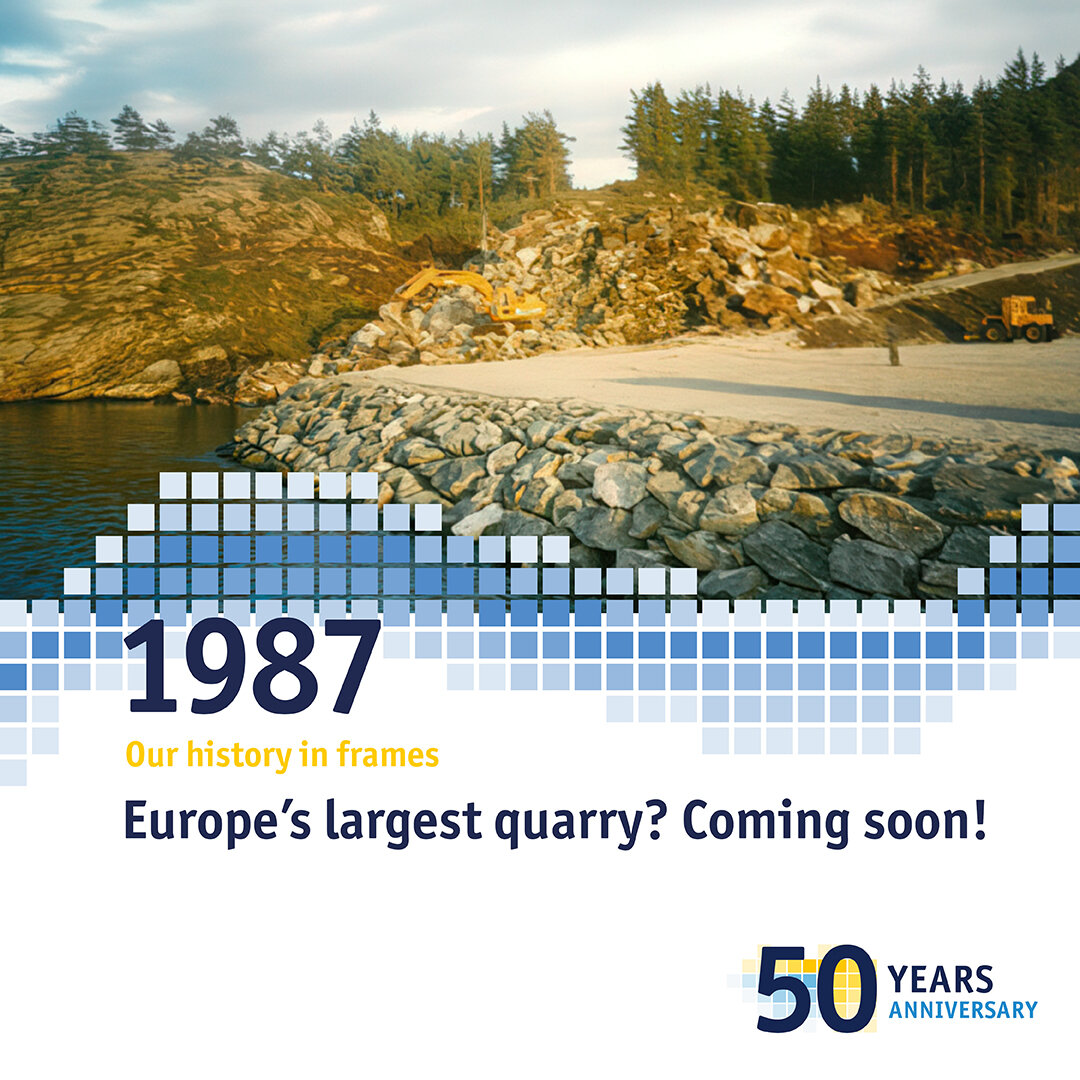
1987
𝐖𝐡𝐚𝐭 𝐝𝐨𝐞𝐬 𝐚 “𝐫𝐨𝐜𝐤𝐲 𝐬𝐭𝐚𝐫𝐭” 𝐫𝐞𝐚𝐥𝐥𝐲 𝐥𝐨𝐨𝐤 𝐥𝐢𝐤𝐞? 𝐓𝐨 𝐮𝐬, 𝐢𝐭’𝐬 𝐟𝐮𝐥𝐥 𝐨𝐟 𝐩𝐨𝐭𝐞𝐧𝐭𝐢𝐚𝐥!
This image from 1987 captures the early groundwork on the Norwegian coast near Jelsa – a site that would soon become Europe’s largest quarry of its kind and a cornerstone of our rock-solid business.
The company was originally founded as Norsk Stein A/S Jelsa by Odd Hotvedt and Per Nerheim. The two had previously worked on the construction of the Førrevass dam, part of Ulla-Førre, Northern Europe’s largest hydropower plant in Suldal. When the dam was completed, the equipment and the Berakvam industrial site (seen in the image) were put up for sale – and the two seized the opportunity.
In no time, a crushed stone plant was established. The founders partnered with Norsk Sand, which handled sales and, in 1989, secured Stema Shipping as a key customer.
Today, the plant is part of the Mibau Stema Group and produces around 13 million tonnes of material annually. From sand and aggregates to road construction materials, water stones, offshore supplies, railway ballast, and specialized products for various industries – our colleagues in Norway deliver.
A warehouse – and a strong committment to Aabenraa Port
Some call it a warehouse – we see a milestone that speaks volumes about growth.
Back in the winter of 1986/87, Stema laid the foundation for something big. To safely and eco-friendly store fertiliser lime for large-scale delivery, we built a warehouse unlike any other: at the time, it was the largest building in Scandinavia with a self-supporting roof.
Inside, 8,000 square metres of space held up to 100,000 tonnes of lime, which helps farmers to secure good harvests. Outside, in the port of Aabenraa, ships were ready to carry our product to customers near and far.
While Mibau Stema has moved on from fertilizer lime as a product – the warehouse is now run by a different company –, one thing hasn’t changed: our commitment to growing. Together with our customers, partners, and team, we continue to build on the strong foundations of our company. Just this year, for example, we expanded our operations in the port of Aabenraa and secured a contract for a new site. With a depth of up to 18 metres, the port is ideally suited to our fleet and plays a vital role in the flow of goods across southern Jutland and northern Germany.
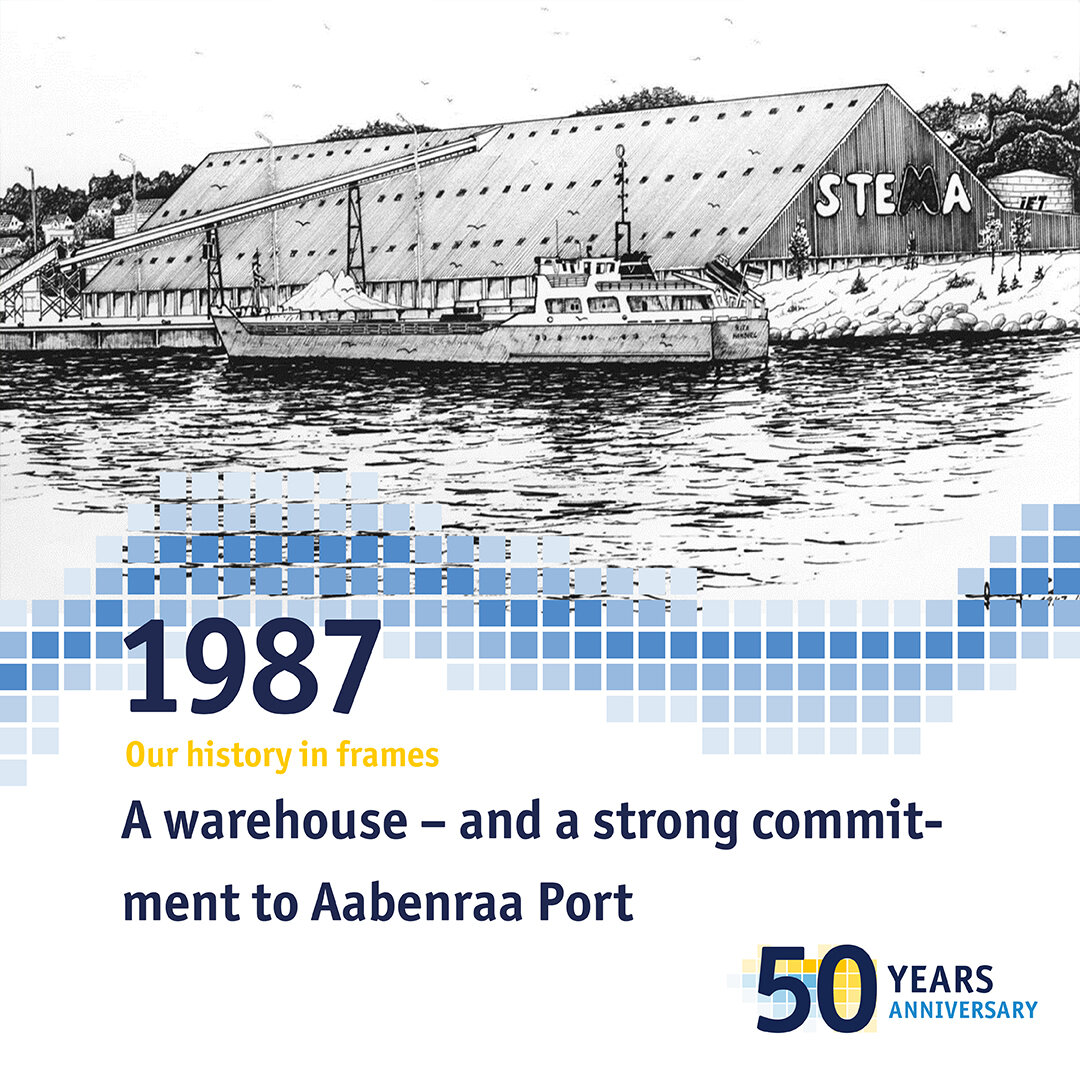
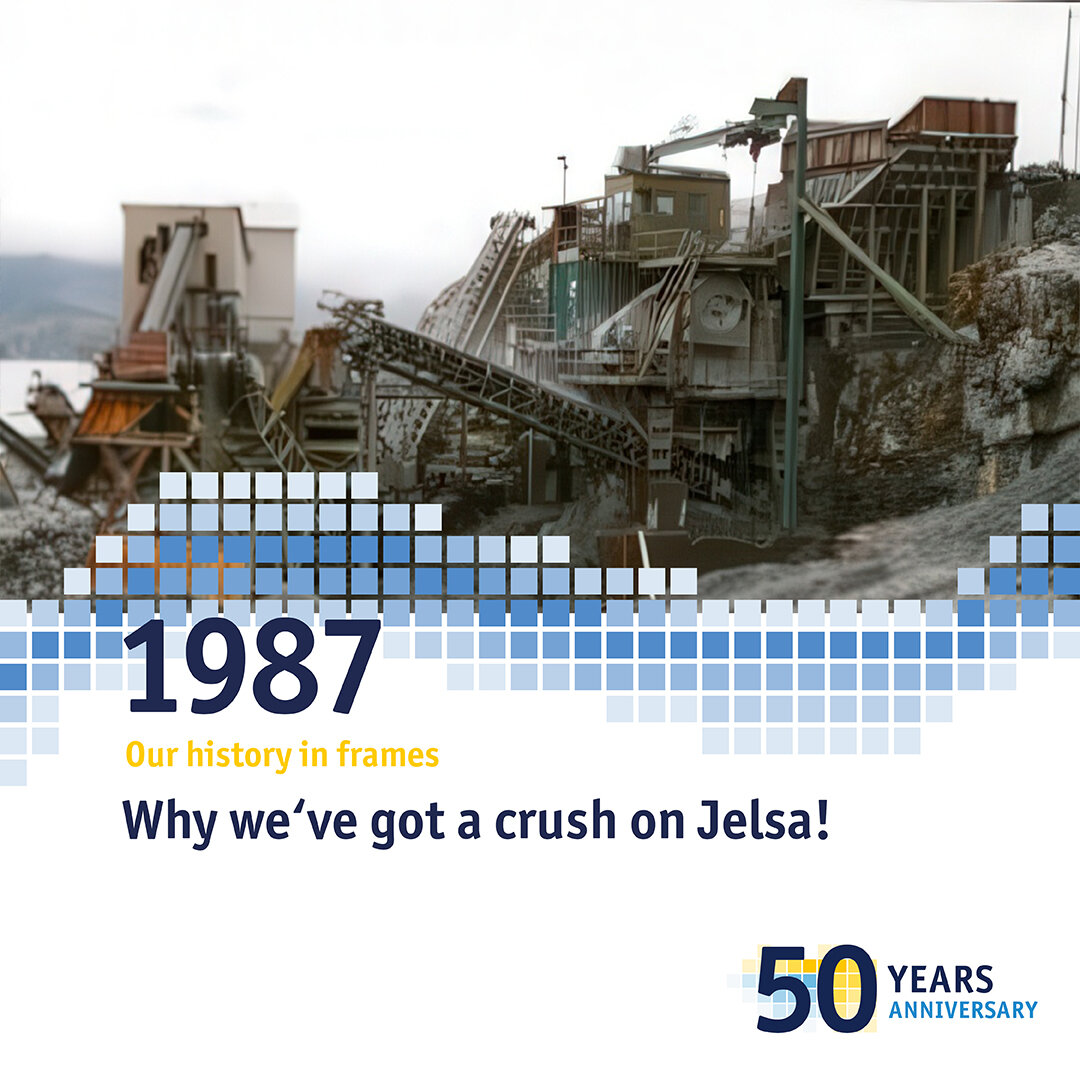
Second-hand machines, first-class dedication.
When Norsk Stein began operations in Jelsa, it did so with used tools – and big ambitions. The photo from 1990 shows our very first plant, built largely from second-hand equipment purchased after the completion of the Førrevass dam.
Originally planned for an annual output of 600,000 tonnes of crushed stone, the site employed just 15 team members in 1989. Today, including seasonal staff, around 340 people work in Jelsa – a remarkable journey, powered by passion, persistence, and the people behind it.
One of Norsk Stein’s founders, Odd Hotvedt, is still part of the team – living proof that long-term success is built on commitment.
Heading east – with vision, drive and a dredger.
After the German reunification, many companies looked east. For our German co-founder EWH, or Mibau, the direction was clear: the Baltic Sea region offered new opportunities – and we were ready to take them.
It all began in 1990 with a gravel plant in Rostock, and the rescue of an old gravel dredger. The “Baltic Kies” had already sunk once, been salvaged and was about to go to the scrap press. After the acquisition, we rebuilt the gravel dredger: it secured a large part of our raw material extraction from the Danish Baltic Sea until it was decommissioned in 2001.
In the 90s, the company expanded further, founding several ready-mixed concrete companies and becoming the region’s leading distributor. We produced and sold millions of tonnes of material. But gravel remained at the heart of it all. The photo from 1993 captures a proud milestone: we built our own gravel dredger MS Seekies, and the gravel plant in Greifswald. There, gravel dredged in Polish waters was processed for the concrete and asphalt industry.
Today, the MS Seekies is no longer part of our fleet. For economic reasons, we now supply the German market from Sweden and Norway – another example of how closely connected our operations have become.
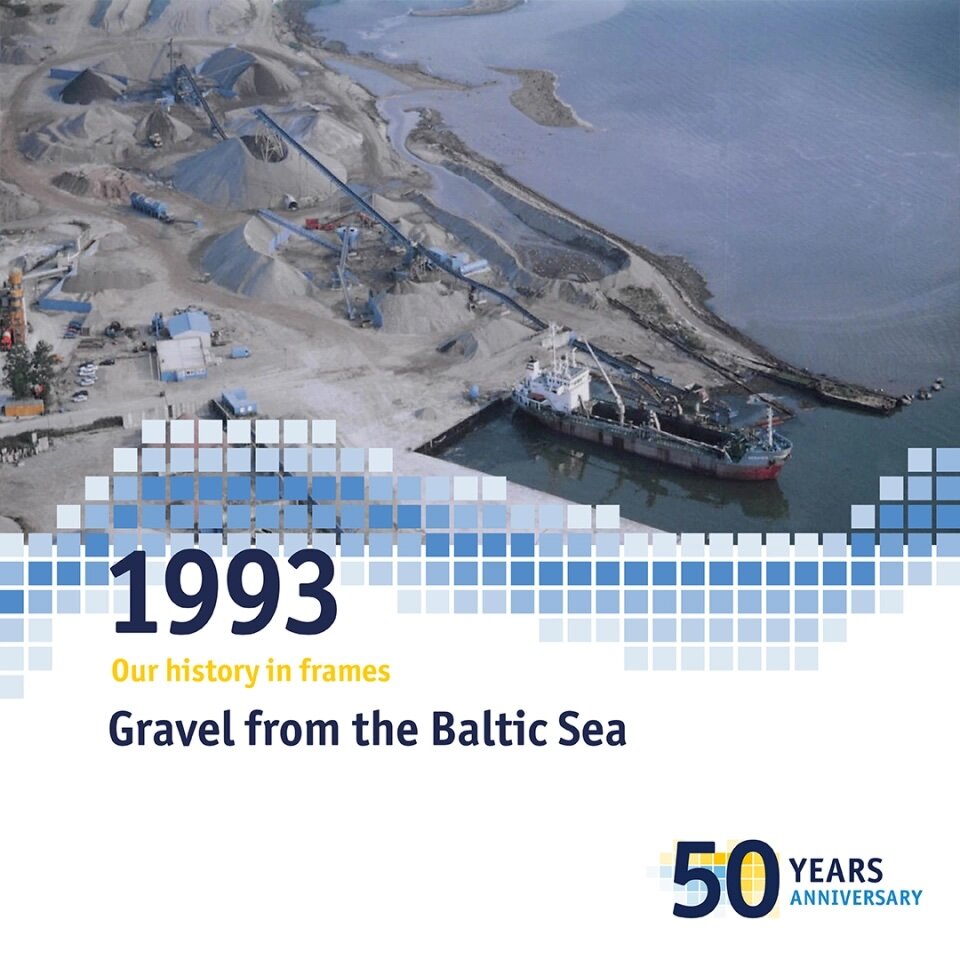
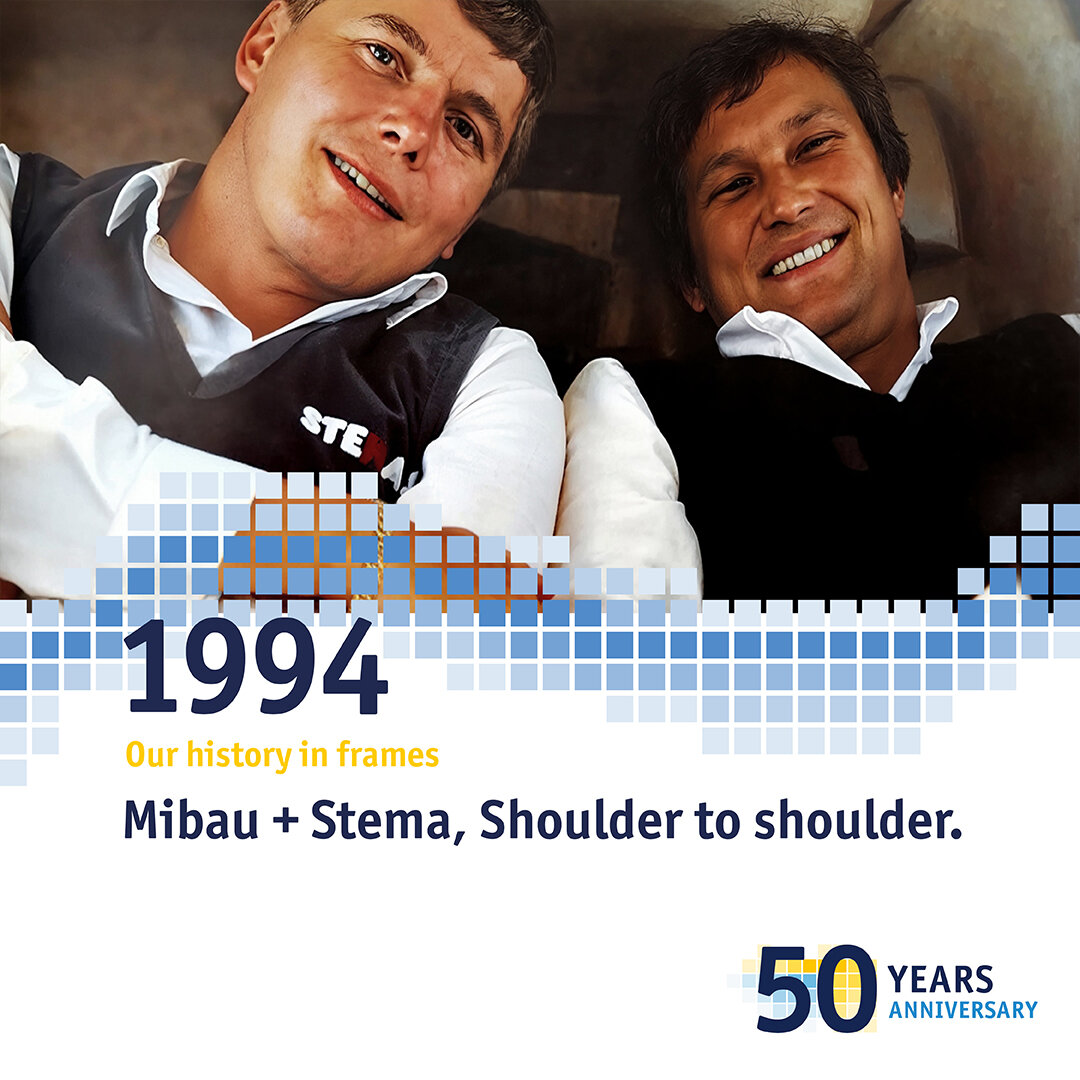
I𝗳 𝘁𝗵𝗮𝘁’𝘀 𝗻𝗼𝘁 𝗮 𝗿𝗲𝗮𝘀𝗼𝗻 𝘁𝗼 𝗰𝗵𝗲𝗲𝗿—𝘄𝗵𝗮𝘁 𝗶𝘀?
1994 marked a defining moment in our company’s history: the year our founders, Lau Boisen (left) and Hans-Jürgen Hartmann (right), came together—not just for the photo, but to turn Mibau and Stema into one company.
But let’s take a step back. For years, the founding companies—EWH and Stenmaterialer & Shipping Aabenraa A/S—maintained a close trading relationship. EWH purchased rock material from Norwegian and Swedish quarries from Stema, which was transported to Germany on what were then smaller ships, and sold it under its own name to German customers.
Then came 1994: EWH transferred its business operations to Mibau and acquired shares of Stema Shipping A/S (Denmark). The rock business was thus merged into the new company, while Stema's lime business was sold to Fakse Kalk.
That Mibau Stema would go on to build its own terminal network and operate Europe’s largest quarry? Judging by this photo, our founders may already have had an inkling.
𝗥𝗼𝗰𝗸𝘀, 𝗴𝗿𝗮𝘃𝗲𝗹, 𝘀𝗮𝗻𝗱 – 𝘄𝗵𝗲𝗿𝗲 𝗱𝗼 𝗼𝘂𝗿 𝗽𝗿𝗼𝗱𝘂𝗰𝘁𝘀 𝗮𝗰𝘁𝘂𝗮𝗹𝗹𝘆 𝗰𝗼𝗺𝗲 𝗳𝗿𝗼𝗺?
Each year, our Norwegian quarries supply around 17 million tonnes of high-quality crushed rock. But that's not all—we also offer sand and gravel from land-based deposits through a long-standing connection with Heidelberg Materials.
This close connection goes back to 1994, when HeidelbergCement acquired shares in EWH, our German founders. Over time, this involvement deepened, leading in 2001 to an exclusive distribution agreement with Heidelberger Sand und Kies (now Heidelberg Materials Mineralik DE GmbH). As part of the deal, we took over employees and began the exclusive distribution of materials from five gravel pits—among them the Langhagen site, the largest in Mecklenburg-Vorpommern with a capacity of 1.5 million tonnes and reserves of 70 million tonnes.
Our network expanded further in 2005 with the addition of three gravel pits, four river barges and a small dredger along the Weser. In 2007, we added the Damsdorf gravel pit—the largest of its kind in Schleswig-Holstein. Thanks to this integrated setup, we can offer customers larger packages with sand and gravel, complementing our aggregates from Norway.
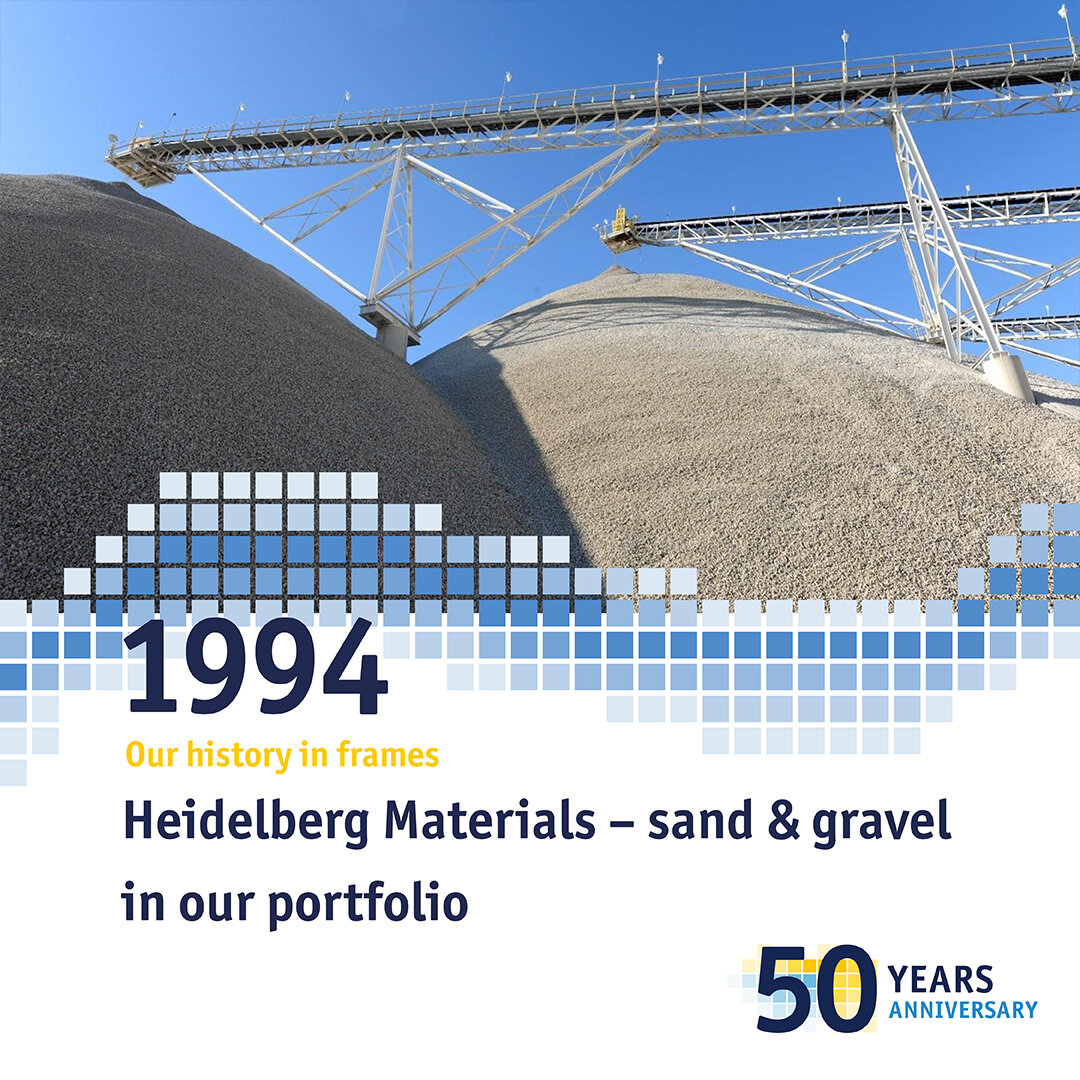
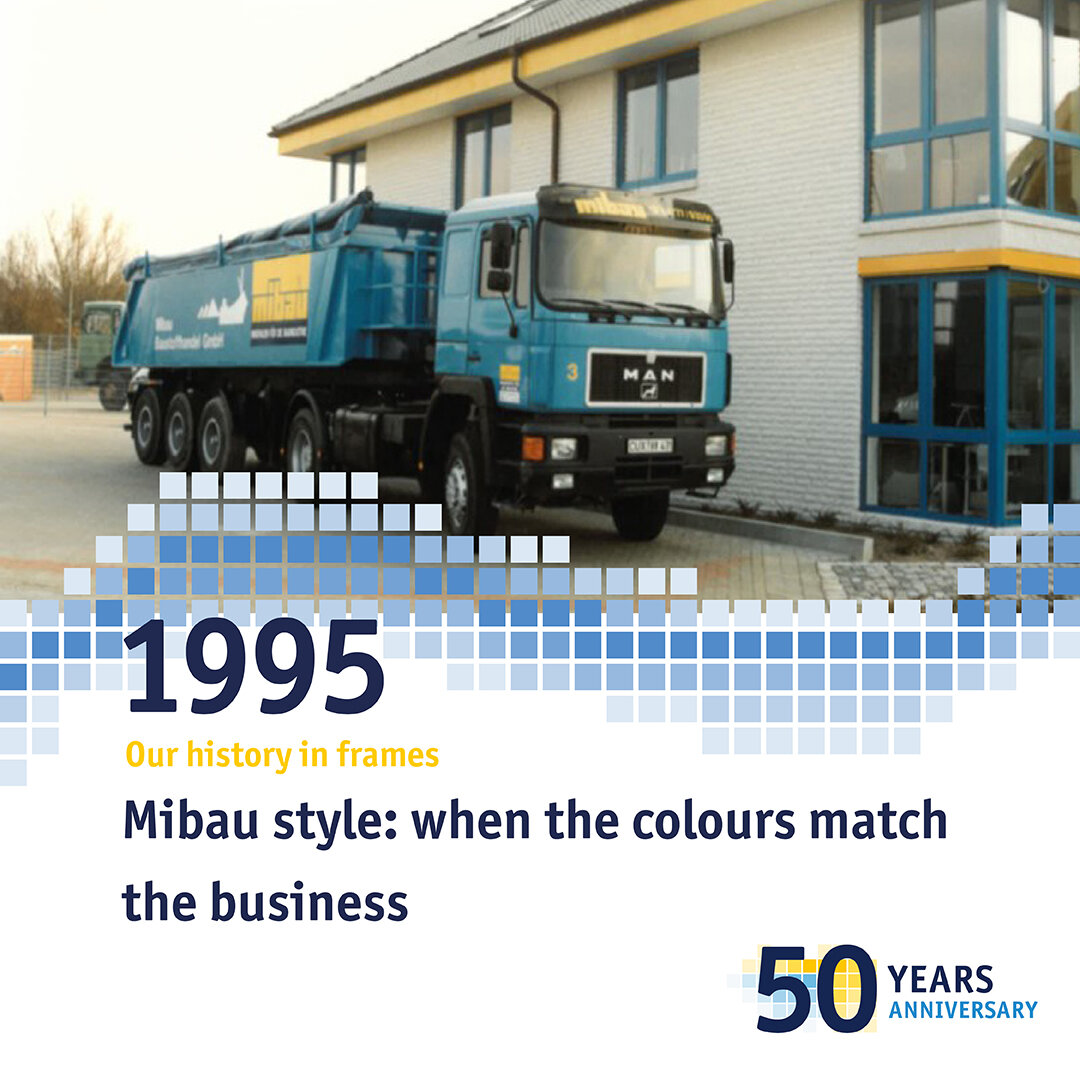
𝗔 𝗻𝗲𝘄 𝗵𝗼𝗺𝗲 𝗳𝗼𝗿 𝗮 𝗴𝗿𝗼𝘄𝗶𝗻𝗴 𝗯𝘂𝘀𝗶𝗻𝗲𝘀𝘀.
Here it is – our German headquarters in the year it officially opened! By 1995, the original premises had become too small for the expanding Elbe-Weser-Handelskontor EWH, or Mibau Stema Deutschland. So the company took the next step and extended its footprint in Cadenberge.
The bold blue and yellow colour scheme still catches the eye. Even the lorries – originally taken over in 1987 with the acquisition of H.-H. Rademacher GmbH in Cuxhaven – were given a fresh new look.
And yes, the most frequently asked design question has an answer: the blue stands for water and the sea – which is central to our logistics to this day. The yellow? Simply the favourite colour of one of our founders, Hans-Jürgen Hartmann. Today, it is a lucky match for our sand, gravel and aggregates products – coincidence or just good taste? In any case, the brand colours make our German headquarters a real eye-catcher!
𝗧𝗵𝗿𝗲𝗲 𝗱𝗲𝗰𝗮𝗱𝗲𝘀, 𝗰𝗼𝘂𝗻𝘁𝗹𝗲𝘀𝘀 𝗰𝗮𝗿𝗴𝗼𝗲𝘀: 𝗧𝗵𝗲 𝘀𝘁𝗼𝗿𝘆 𝗼𝗳 𝗦𝘁𝗲𝗺𝗮 𝗦𝗵𝗶𝗽𝗽𝗶𝗻𝗴 𝗨𝗞
In this jubilee year, we are not only celebrating 50 years of Mibau Stema Group, but also the 30th anniversary of Mibau Stema UK Ltd.
In the mid 1990's to meet growing demand Mibau Stema Group looked at other markets and founded Stema Shipping UK Ltd. in 1995, our first cargo of aggregates – ca 8,500 tonnes of Type 1 subbase (0/32 mm) – arrived in Chatham (Kent), expanding with a lease at the Port of Tilbury later the same year. In 1998 we replaced Chatham with Northfleet, once home to a power station (decommissioned in the early 1990s), Northfleet retained its jetty. The wharf is owned by Mibau Stema UK and remains in use to deliver materials with our self-unloading vessels with conveyor booms that reach 75 metres inland. In the early 2000's we added terminals at Gt Yarmouth, Hull and Tyne, supplying high quality aggregates to the local markets. In 2022 to reduce the carbon impact for some of our key clients we entered the Port of Sheerness.
Our materials supplied has evolved too. Where we once only delivered subbase through two terminals, we now serve the full length of the east coast with 6 terminals suppling a full product range, including single grades materials. Flexibility and adaption to market condition is one of our key strengths.
The image from Northfleet dates back to the early 2000s – would you have noticed, and if so, what gave it away?
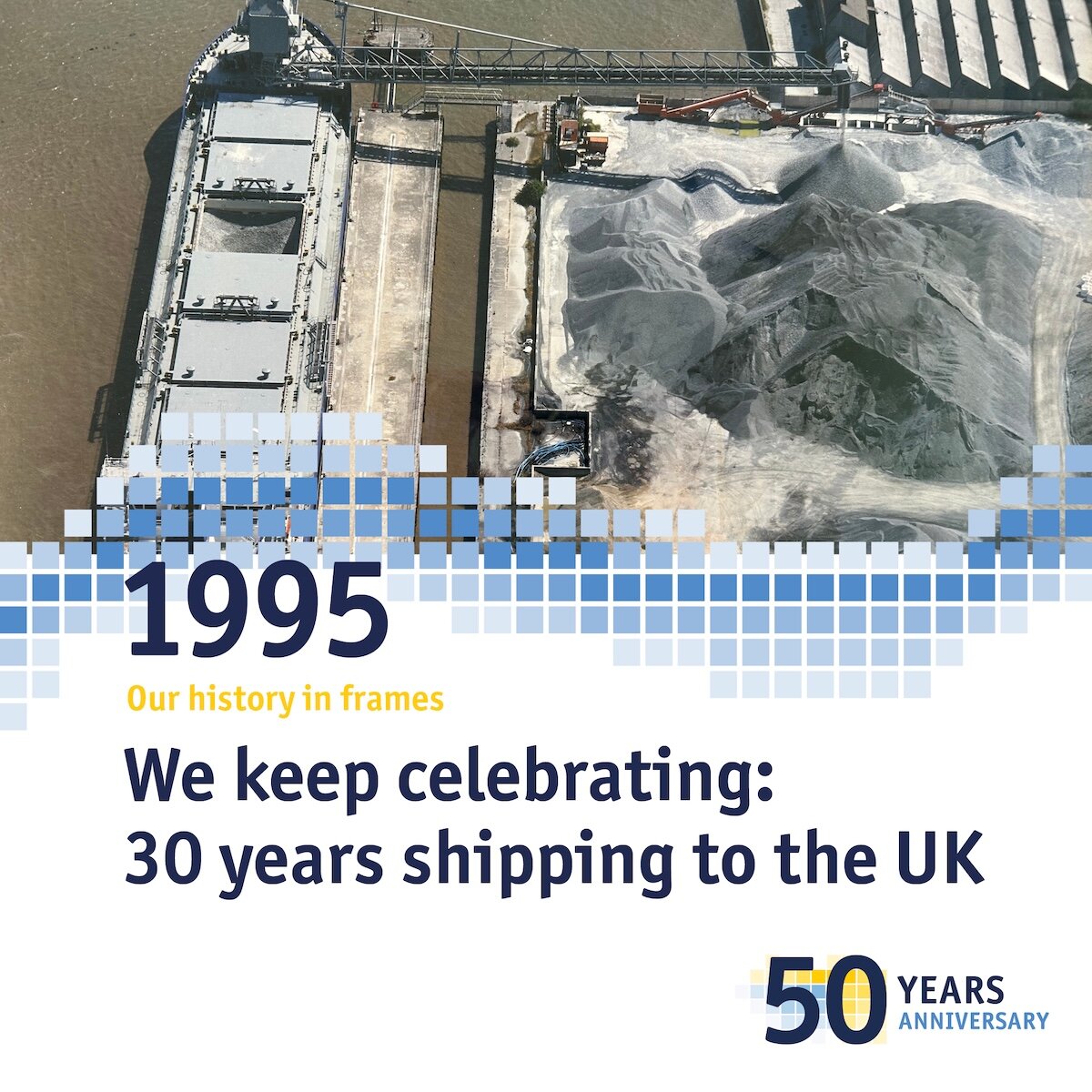
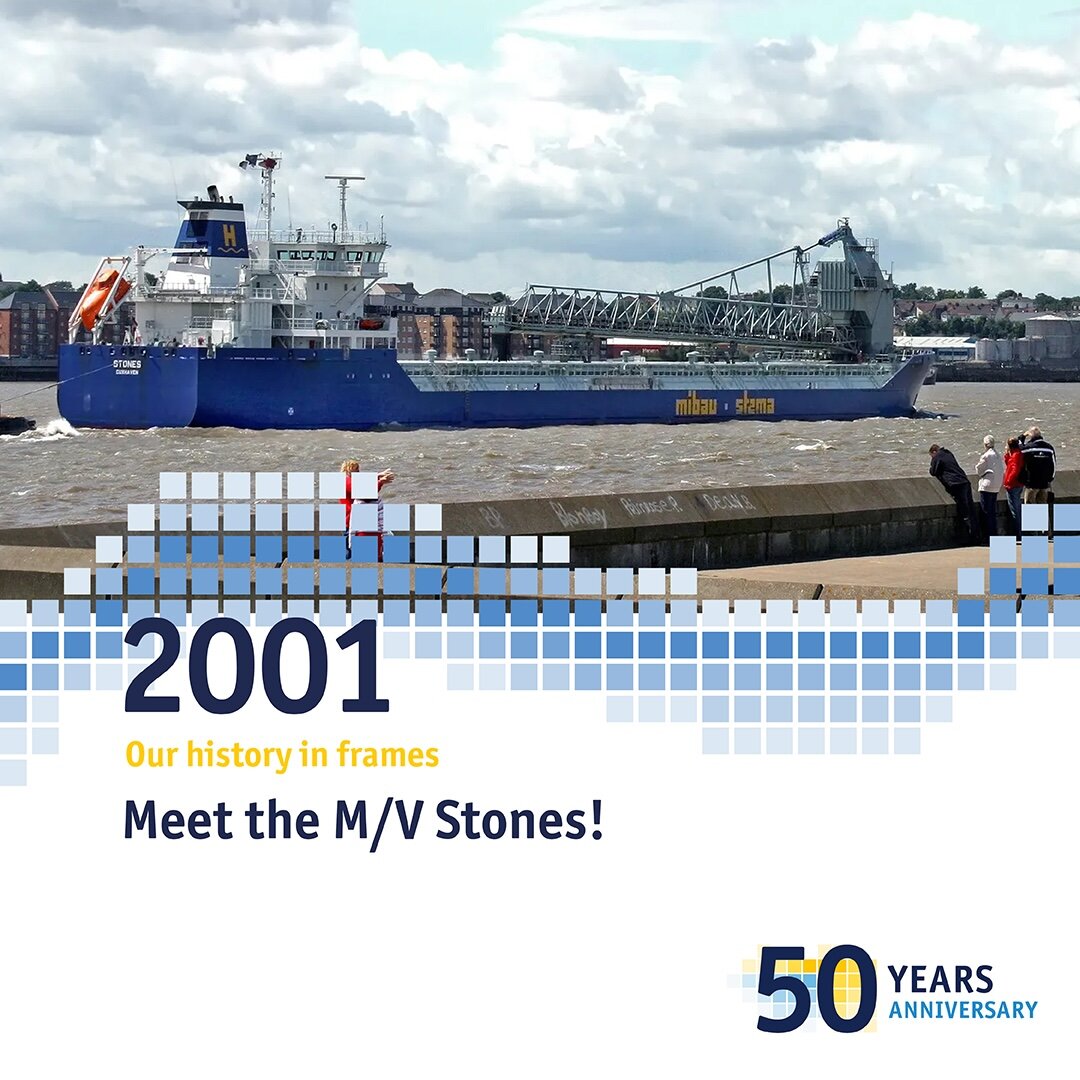
𝗡𝗲𝗲𝗱 𝗮 𝗽𝗿𝗼𝗼𝗳 𝘁𝗵𝗮𝘁 𝘀𝗼𝗺𝗲 𝘀𝘁𝗼𝗻𝗲𝘀 𝗰𝗮𝗻 𝗳𝗹𝗼𝗮𝘁? 𝗠𝗲𝗲𝘁 𝘁𝗵𝗲 𝗠/𝗩 𝗦𝘁𝗼𝗻𝗲𝘀!
Our very first custom-built self unloading vessel with a carrying capacity of 27,000 tonnes commissioned into service with Stema Shipping on 16 May 2001. But the 𝗠/𝗩 𝗦𝘁𝗼𝗻𝗲𝘀 did not emerge from a vacuum. Since the mid-1990s, our operations had relied on vessels chartered from Jebsen Rederi. In 1997, we acquired one of these and renamed her MS Splittnes. Still in service today with enhanced capacity, she continues to ply the waters of the North and Baltic Seas with steadfast reliability.
The belt-unloading vessel M/V Stones, on the other hand, was designed to meet our operational requirements from the very beginning. Built at the renowned Sietas Shipyard in Hamburg, the vessel had a dramatic backstory. Several hull sections were preassembled in Poland and transported to Hamburg via open barge. A violent storm struck, causing a barge to capsize. Incredibly, all components were recovered, sent back to Poland for repair, and later shipped to Hamburg anew.
Despite this early setback, the Stones was completed in under a year, christened by Petra Hartmann, daughter of one of our founders, and went on to deliver an outstanding performance: over 𝟮𝟯.𝟱 𝗺𝗶𝗹𝗹𝗶𝗼𝗻 𝘁𝗼𝗻𝗻𝗲𝘀 of cargo carried across 𝟵𝟬𝟲 𝘃𝗼𝘆𝗮𝗴𝗲𝘀!
The vessel was sold in 2015 and continues her journey—half a world away, sailing under Australian skies.
𝗔𝗻𝗱 𝘄𝗵𝗮𝘁 𝘄𝗲𝗿𝗲 𝘆𝗼𝘂 𝘂𝗽 𝘁𝗼 𝘁𝘄𝗲𝗻𝘁𝘆 𝘆𝗲𝗮𝗿𝘀 𝗮𝗴𝗼? 𝗔𝘁 𝗠𝗶𝗯𝗮𝘂 𝗦𝘁𝗲𝗺𝗮, 𝘄𝗲 𝘄𝗲𝗿𝗲 𝗽𝗿𝗲𝗽𝗮𝗿𝗶𝗻𝗴 𝘁𝗼 𝗲𝘅𝗽𝗮𝗻𝗱 𝗶𝗻𝘁𝗼 𝗻𝗲𝘄 𝗘𝘂𝗿𝗼𝗽𝗲𝗮𝗻 𝗺𝗮𝗿𝗸𝗲𝘁𝘀!
It all began in 2005 with France, where we opened our first terminal in Rogerville, near Le Havre. After several relocations, our operations are now based at our headquarters in Le Mesnil-Esnard, supported by additional terminal in Saint-Wandrille. Our journey in Poland began in 2000 with a temporary terminal serving a ring road project. By 2008, we had established a permanent Mibau Polska terminal in Gdańsk – and just three years later, in 2011, we were proud to supply 1.4 million tonnes of material for major projects, playing a key role in absorbing the Jelsa expansion. In 2009, we made our entry into the Dutch market with our own terminal in Amsterdam – just one year later, we were already a key supplier to the Maasvlakte project. Business continues to thrive in France, Poland and the Netherlands. One of our very first French projects – asphalt gradings for Dunkirk – is still ongoing today. In the Netherlands, we have become a trusted knowledge partner for engineering consultancies, municipalities and contractors, providing high-quality materials for road construction and prefab plants. And in Poland, we have delivered millions of tonnes to major projects in recent years – from highways to track lines – particularly around Gdańsk.
We are proud of how far we have come, and excited for what’s ahead!
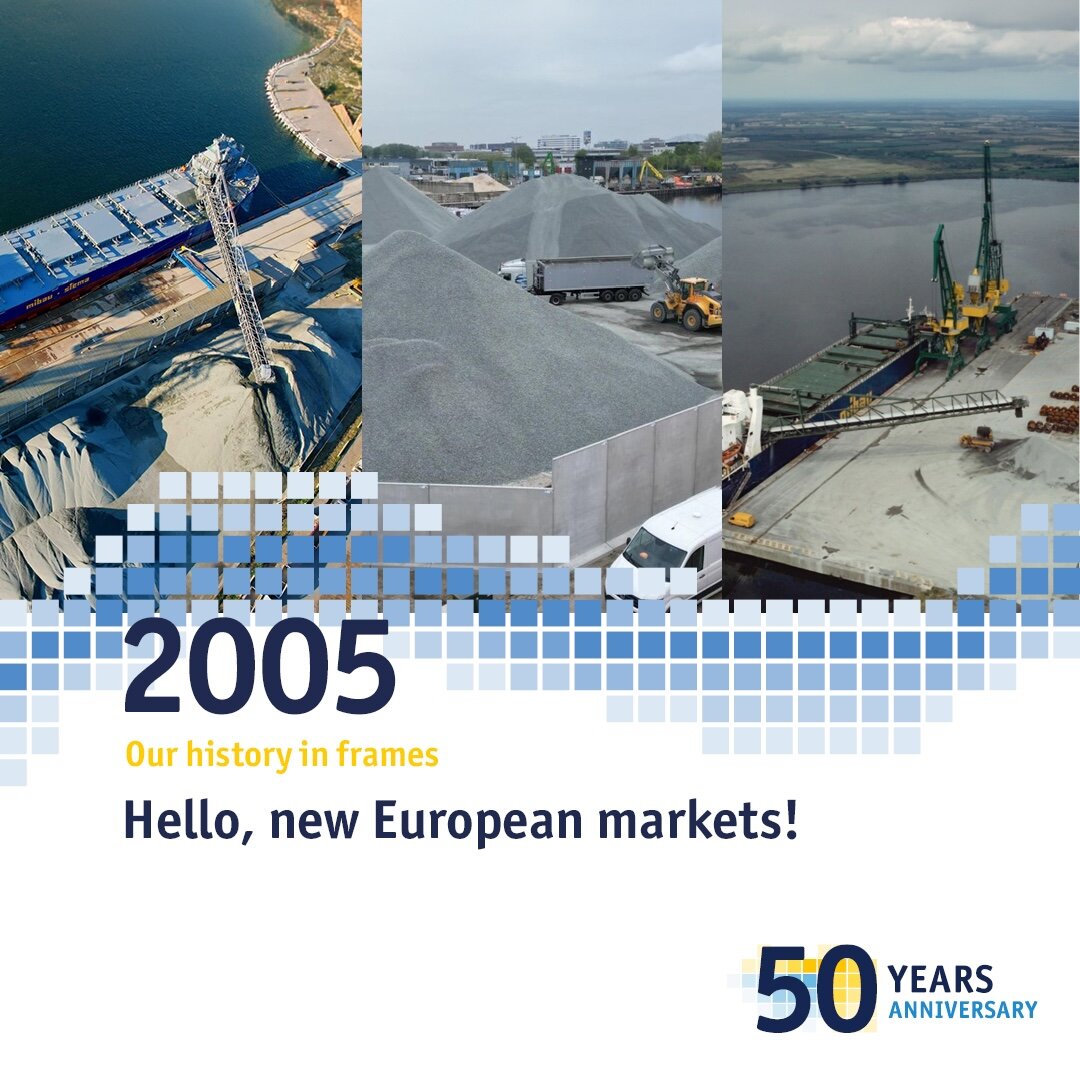

𝗛𝗼𝘄 𝗱𝗶𝗱 𝗘𝘂𝗿𝗼𝗽𝗲’𝘀 𝗹𝗮𝗿𝗴𝗲𝘀𝘁 𝗾𝘂𝗮𝗿𝗿𝘆 𝗯𝗲𝗰𝗼𝗺𝗲 𝘄𝗵𝗮𝘁 𝗶𝘁 𝗶𝘀 𝘁𝗼𝗱𝗮𝘆?
Step by step—beginning with the first major expansion in Jelsa between 1992 and 1994 and an even bigger one in 2010.
The production plant in Jelsa, today achieves an impressive annual output of close to 𝟭𝟯 𝗺𝗶𝗹𝗹𝗶𝗼𝗻 𝘁𝗼𝗻𝗻𝗲𝘀. 15 years ago, the modernisation programme—aptly named P10—was built around the ambitious, if modest by today’s standards, target of 𝟭𝟬 𝗺𝗶𝗹𝗹𝗶𝗼𝗻 𝘁𝗼𝗻𝗻𝗲𝘀 𝗽𝗲𝗿 𝘆𝗲𝗮𝗿. Between 2008 and 2012, Jelsa underwent a remarkable transformation: a new loading quay was constructed, a modern production plant was established, and operations expanded further inland.
Today, the public road runs directly through Europe’s largest quarry. And for those passing by: don’t forget to look left and right (while still driving safely)—you’re moving through a piece of industrial history in the making.